Showing 201–210 of 262 results

The book studies the contributions of some of the illustrious persons like Rammohan Roy, Gandhi, Tagore, Gokhale and Satish Chandra to the socio-cultural and spiritual life of late eighteenth to nineteenth century, and aims at situating Sri Aurobindo’s thoughts vis- -vis those of his contemporaries.
The period spanning the latter half of the eighteenth century and the nineteenth century in India was marked by a reawakened national spirit to reinterpret Indian traditional values in modern light. This book, comprising deliberations presented at a national seminar, discusses some of the illustrious persons of that period who by their ideas and actions enriched the socio-cultural and spiritual life of the period. Researchers study the period of Sri Aurobindo, his contributions as well as those of his contemporaries including Raja Rammohan Roy, Mahatma Gandhi, Tagore, Gokhale and Satish Chandra. The aim is to situate Sri Aurobindo’s thoughts in its socio-cultural background and study the contributions of his contemporaries to bring out the distinctiveness of Sri Aurobindo. The essays deal with Sri Aurobindo’s philosophy of nationalism, his view of Indian renaissance and Ireland’s national and cultural renaissance and his attitude towards national education. They take up interpretations of violence and non-violence by Sri Aurobindo and Mahatma Gandhi, Vivekananda’s outlook about morality, caste system and dharma, and response of Aurobindo, Tilak and Gokhale to Western imperialism. An interesting effort is made to compare the thoughts of Sri Aurobindo and Tagore towards the revolutionary movement and reveal Aurobindo’s perception of Tagore’s poetry. The book will be useful to historians, political and social thinkers, besides the general readers.
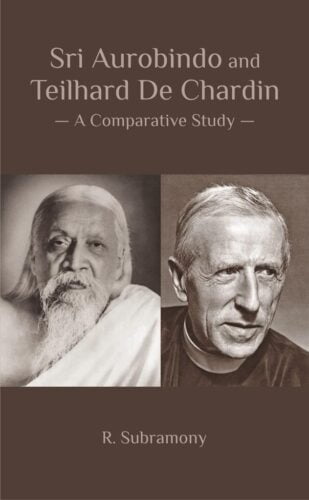
The book critically analyses many philosophical concerns of both Sri Aurobindo and Teilhard de Chardin and talks about the future evolution. It involves recognizing parallel features as well as differences in both the philosophers.
Sri Aurobindo and Teilhard de Chardin: A Comparative Study ventures into identify the progressive rungs in the ladder of human consciousness pointed out by both the thinkers, to see how they visualize going beyond to achieve Sachchidanda, the Supreme Bliss. The scrutiny involves recognizing parallel features as well as differences in both the philosophers.
Their writings are extremely significant in a phase where the future of humanity is at risk. Sri Aurobindo, who is steeped in the Vedic wisdom of the ancient India, calls up on us to shed our selfish nature and reach the higher levels of consciousness. Teilhard de Chardin, a Jesuit priest, exhorts us to unite and shed divisions. There is a striking similarity in their cosmologies. Sri Aurobindos concept of Supermind is the last stage in evolution and Teilhards Omega Point is the summit of evolution. Their process of evolution contains a triple transformation of consciousness. The book critically thus analyses many philosophical concerns of both Sri Aurobindo and de Chardin and talks about the future evolution.
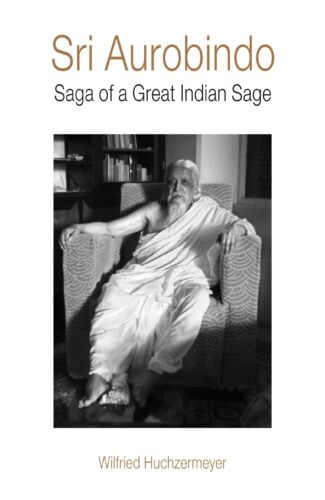
In this biography, Sri Aurobindo’s life is presented comprehensively in all of its aspects. It also takes readers on a journey through Sri Aurobindo’s manifold literary creations, introducing them in accessible language to magnificent prose works such as The Life Divine, The Synthesis of Yoga or Essays on the Gita and the epic Savitri.
Sri Aurobindo is one of the most well-known Indian personalities of the twentieth century. He was a freedom fighter, a yogi and a poet; he developed what has become known worldwide as Integral Yoga. As a sage of great wisdom, he was twice nominated for the Nobel Prize.
In the present biography, his life is presented comprehensively in all of its aspects. The most important sources available today have been evaluated, among them his spiritual diary Record of Yoga, which was first published as a book in 2001. The author also takes readers on a journey through Sri Aurobindo’s manifold literary creations, introducing them in accessible language to magnificent prose works such as The Life Divine, The Synthesis of Yoga or Essays on the Gita and the epic Savitri.
This volume also portrays vividly the lesser known facet of Sri Aurobindo’s personality as a freedom fighter and his influence among the Hardliners, until his moving to Pondicherry.
Written as a living report with great insight and knowledge, this biography will be of great value to scholars, students and devotees interested in high-level integral studies. A careful documentation with numberless references facilitates further research into each respective subject. The large photo section contains many historical photos, as well as current images of the Sri Aurobindo Ashram and its surroundings.
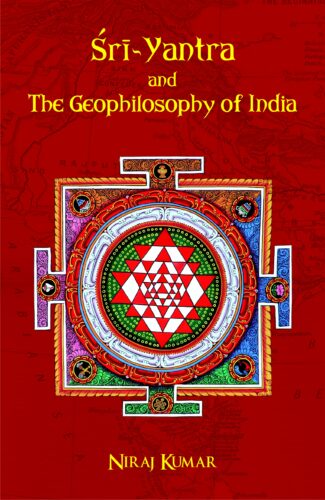
Sri-yantra, a mythical instrument, strikes a balance between the gross subtle and causal dimensions of the microcosmic and macrocosmic phenomena. It has made a strong footprint in the geophilosophy of India and beyond, and has a major stake in India’s landscape, code of Indian civilization, and is set to make a difference in various walks of Indian life.
The concept of geophilosophy, or to be more precise geo-metaphysics, is an enduring bond between the philosophical thought and its terrestrial support. Essentially the geographical positioning of a country influences its thinking and thus impacts its philosophy.
Sri-yantra, a mythical instrument, strikes a balance between the gross subtle and causal dimensions of the microcosmic and macrocosmic phenomena. It syncs with the esoteric ontology of the cosmos, the individual body, the state, the nation in its geographic aspect, all creative and conducive societal values, and the grand unification of existing dogmas, doctrines, creeds and commitments.
The author talks about his speculation of a triangular semblance of the Indian subcontinent and his intuitive experiences of ancient axioms of Eastern metaphysics. He elucidates that Sri-yantra, once esoteric, has become exoteric and can still retain its crown position in India. This book is a valuable accumulation of various facts, figures and values from myriad canons of mystic revelations. It also provides a type of interpolative vindication or justification of the two apparently conflicting ideologies of the oriental and occidental origins.
Sri-yantra has made a strong footprint in the geophilosophy of India and beyond, and has a major stake in India’s landscape, code of Indian civilization, and is set to make a difference in various walks of Indian life. This unusual volume sheds light on many a topic, which will interest readers of a wider spectrum.
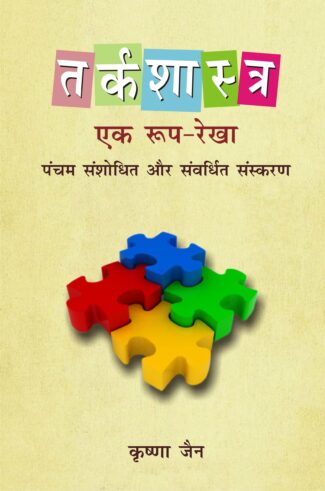
The present book is the fourth enlarged edition of the earlier book Tarkasastra Ek Roop Rekha. The current edition includes an additional chapter on Uses of Language and its Functions. Like the earlier book, the present book sets forth the principles and procedures of elementary Logic in the most simplified way and is specifically designed and intended for the use of undergraduate students. It contains almost all the main topics on Deductive, Inductive and Symbolic Logic prescribed in the syllabi of different universities in the country.
The present book is the fourth enlarged edition of the earlier book A Text Book of Logic-An Introduction. The current edition includes an additional chapter on Uses of Language and its Functions. Like the earlier book, the present book sets forth the principles and procedures of elementary Logic in the most simplified way and is specifically designed and intended for the use of undergraduate students. It contains almost all the main topics on Deductive, Inductive and Symbolic Logic prescribed in the syllabi of different universities in the country. The book attempts to present a clear perspective on Logic as a science of correct reasoning. In the introductory chapter the aim of Logic and the task of a Logician are elaborated. Other topics covered here are Terms, Propositions, Immediate Inference, Syllogism, Boolean Equations, Venn Diagrams, Anti-Logism Theorem, Truth Functions, Truth Table, Deductive Method, Predicate Calculus, Scientific Inductions, Causation, Mill’s Methods and Informal Fallacies to mention a few. All the topics are explained with the help of diagrams and lucid examples. Each chapter is followed by plenty of exercises for the benefit of students.
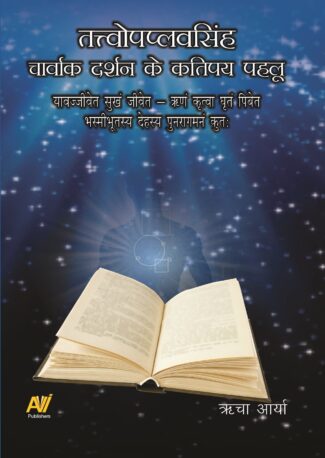
Jayarashibhatta’s Tattvopaplavsimha (ca. 8th cent.) is a work of the Charvak philosophy, which rejects evidence other than the direct evidence. The manuscript of Tattvopaplavisimha was obtained from Patan in 1926. The historical work examines ‘Evidence’ in the light of Indian philosophy. The present book reviews the refutation of various epistemological principles explained in Tattvopaplavsimha.
Jayarashibhatta’s Tattvopaplavsimha (ca. 8th cent.) is considered to be an important work of the Caravaka (Charvak) philosophy. The Charvak philosophy rejects evidence other than the direct evidence, to the extent that it does not consider sky as an element in the five fundamental elements (earth, water, fire, air and sky). The manuscript of Tattvopaplavisimha was obtained from Patan (modern-day Patna) in 1926. It was published in the Oriental Series in 1940 and with an introduction in Hindi by Pandit Sukhlal Sanghvi in 1987. The historical work examines the definitions of the evidence as accepted by various arms of Indian philosophy. The present book reviews the refutation of various epistemological principles explained in Tattvopaplavsimha.जयराशिभट्ट कृत तत्त्वोपप्लवसिंह (आठवीं शताब्दी) चार्वाक दर्शन का ग्रन्थ माना जाता है। चार्वाक दर्शन प्रत्यक्ष प्रमाण के अतिरिक्त सभी प्रमाणों को अस्वीकार करता है, इसके साथ ही प्रत्यक्ष को ही एकमात्र प्रमाण मानने के कारण चार्वाक पंचतत्वों (पृथ्वी, जल, अग्नि, वायु एवं आकाश) में आकाश तत्त्व को नकारता है। तत्त्वोपप्लवसिंह ग्रन्थ की पाण्डुलिपि सन 1926 में पाटन से प्राप्त हुई। सन 1940 में ओरियंटल सीरीज में तथा 1987 में पंडित श्री सुखलाल जी सांघवी की हिंदी भूमिका के साथ प्रकाशित हुआ। यह ग्रन्थ वैतण्डिक पद्धति होने के कारण भारतीय दर्शन के विभिन्न सम्प्रदायों द्वारा स्वीकृत प्रमाणों की परिभाषाओँ और प्रमाण की परीक्षा करता है। प्रस्तुत पुस्तक में तत्त्वोपप्लवसिंह में व्याख्यायित विभिन्न ज्ञानमीमांसीय सिद्धांतों के खंडन की समीक्षा की गयी है।

It is, for the first time, a complete Hindi translation of Bhatta Jairashis Tattvopaplavasimha by the two well-versed scholars of classical Indian Philosophy has been brought about. This translation, with a close hermenutical rendering of the text, provides a convincing structure of skeptical deconstruction of all the major systems of Indian Philosophical thought. Its study leads a reader toward a radical support of Charvaka Ideology by declaring the annihilation of all principles.
We come across variety of fragmented ideas related to the Philosophy of Charvaka in name of Bhutacaitanyavadi, Lokayatika, Akriyavadi and so on. But the Tattvopaplavasimha of Jairashi Bhatta is the only text available in Indian tradition which claims to rediscover the tradition of Brihaspati, supposed to be the founder of Charvaka Philosophy. It is, for the first time, a complete Hindi translation of the Tattvopaplavasimha is brought out by two well-versed scholars of classical Indian Philosophy. This translation, with a close hermeneutical rendering of the text, provides a convincing structure of dialectical as well as sceptical deconstruction of all the major systems of Indian Philosophical thoughts. Its study leads a reader towards a radical support of Charvaka ideology by declaring the annihilation of all principles.
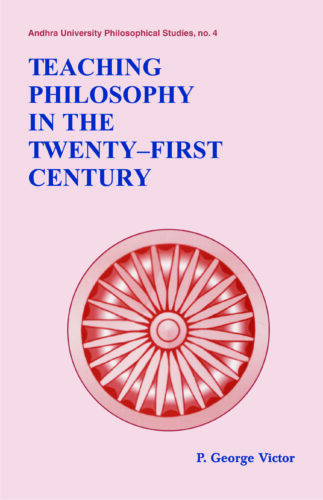
The papers study various aspects of teaching philosophy: its methods, models, techniques and associated problems and prospects. They scrutinize philosophy curriculum in universities and use of computers for teaching it. They discuss ways to popularise philosophy and introduce it at the elementary level in schools.
The relevance of philosophy in the strife torn world of today cannot be undermined: going into the why of ideas, philosophy examines the importance of concepts and ways to cultivate values, and foster them. But its growing unpopularity particularly as a discipline of study warrants specific attention. The book explores an important factor responsible for this the way in which philosophy is taught. The papers, presented at a national seminar sponsored by Indian Council of Philosophical Research, look into various aspects of teaching philosophy: its methods, models, techniques, associated problems and prospects in the coming decades to highlight the nature and relevance of philosophy. They scrutinise the philosophy curriculum in universities today and study the methods of teaching philosophy in ancient India, with their stress on summarising the essence of philosophical doctrines in sutras or aphorisms. Scholars from the West in their thought-provoking analyses present the changing patterns of curriculum and syllabus of philosophy, and the use of computers and science fiction for the purpose. The Indian teachers of philosophy, both old and young, emphasise on acquainting the students with philosophy right from the school level, and teaching philosophy in an entertaining yet edifying manner by presenting life stories of philosophers and teaching through novel methods. They discuss the need to introduce and popularize philosophy among people in general so as to make philosophy a way of life that can usher in moral and spiritual progress in the Twenty-first Century.
This book sets forth the principles and procedures of elementary Logic in a more simplified way. The enlarged edition of A Text Book of Logic Þ An Introduction, it includes an additional chapter on Uses of Language and its Functions besides the main topics on Deductive, Inductive and Symbolic Logic prescribed by various universities.
The present book is the fifth enlarged edition of the earlier book A Text Book of Logic An Introduction. The current edition includes additional chapters on Arguments and Explanations, and Dilemma. Like the earlier book, the present book sets forth the principles and procedures of elementary Logic in the most simplified way and is specifically designed and intended for the use of undergraduate students. It contains almost all the main topics on Deductive, Inductive and Symbolic Logic prescribed in the syllabi of different universities in the country.
The book attempts to present a clear perspective on Logic as a science of correct reasoning. In the introductory chapter the aim of Logic and the task of a Logician are elaborated. Other topics covered here are Terms, Propositions, Immediate Inference, Syllogism, Boolean Equations, Venn Diagrams, Anti-Logism Theorem, Truth Functions, Truth Table, Deductive Method, Predicate Calculus, Scientific Inductions, Causation, Mill’s Methods and Informal Fallacies to mention a few. All the topics are explained with the help of diagrams and lucid examples. Each chapter is followed by plenty of fresh and exclusive exercises for the benefit of students.

The book recounts 100 darsanas delving into the meaning of the Atmopadesa Satakam One Hundred Verses of Self-Instruction of Narayana Guru to present insights into the essence of Guru-disciple transmission. It combines the mystical element with scientific rigour to attempt a total transformation of consciousness in the reader.
With this verse you are entering into an intense spiritual discipline. Thus concludes the commentary of the first verse of Atmopadesha Shatakam, the One Hundred Verses of Self Instruction of Narayana Guru, the best known of his major works. Epitomizing the essence of Guru-disciple transmission, That Alone: The Core of Wisdom recounts 100 darsanas presenting the meaning of Atmopadesha Shatakam to a group of disciples. The power of the Hundred Verses is summed up by Guru Nitya: There is no need to learn each verse and then rationally apply it in everyday life. You can even hear it and forget it. Forgetting means it only goes deeper into you. Once you have heard it, it will go and work its way by itself. The effect will be very subtle. It comes almost without you knowing that it is somethings which you heard that is enabling you to see things in a new light or make resolutions in a certain more helpful way. Combining scientific rigor with mystical rapture, this book has the power to bring about a total transformation of consciousness by leading the reader to his or her own Core, wherein lies the essence of wisdom.
| × |
|
Philosophical Understanding of Human Rights 1 x ₹450.00 |
| × |
|
A Child of Destiny 1 x ₹855.00 |